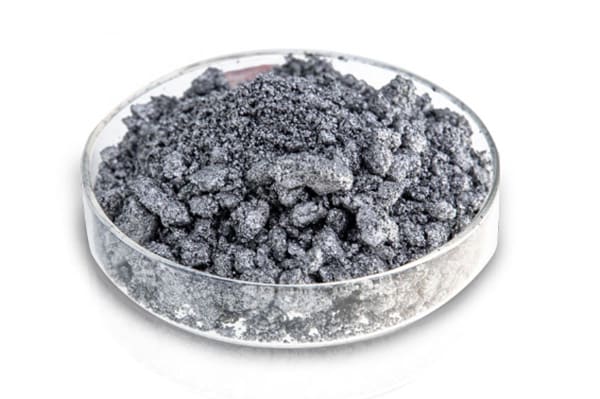In the world of coatings and paints, aluminium pastes play a crucial role in providing metallic finishes and enhancing the appearance of various products. Among the different types of aluminium pastes available, non-leafing aluminium paste stands out for its unique properties and applications. But what exactly is non-leafing aluminium paste, and how does it differ from other types of aluminium paste?
Understanding Aluminium Paste
Aluminium paste is a metallic pigment composed of aluminium powder and a carrier solvent, often combined with a dispersing agent. This paste is used primarily in coatings, paints, and inks to impart a metallic sheen, enhance reflectivity, and improve the appearance of surfaces. Aluminium pastes are categorized into two main types: leafing and non-leafing, each with distinct characteristics and uses.
Leafing vs. Non-Leafing Aluminium Paste
The primary difference between leafing and non-leafing aluminium pastes lies in how the aluminium flakes are distributed within a coating or paint film. This difference is a result of the type of fatty acid used during the manufacturing process.
Leafing Aluminium Paste
In leafing aluminium paste, the aluminium flakes float to the surface of the film after application. This occurs because the flakes are coated with a fatty acid (often stearic acid) that causes them to repel the resin in the paint or coating. As a result, the flakes align parallel to the surface, creating a continuous, reflective layer that provides a bright, metallic finish. Leafing aluminium pastes are commonly used in applications where a high degree of reflectivity and a mirror-like appearance are desired, such as in automotive coatings, decorative paints, and metallic inks.
Non-Leafing Aluminium Paste
Non-leafing aluminium paste, on the other hand, is produced using a different type of fatty acid, such as oleic acid. This causes the aluminium flakes to disperse uniformly throughout the paint or coating film rather than floating to the surface. The flakes remain suspended within the entire thickness of the film, resulting in a more uniform metallic effect with less reflectivity compared to leafing pastes.
Production of Non-Leafing Aluminium Paste
The manufacturing process of non-leafing aluminium paste begins with the grinding of aluminium powder in a ball mill or a similar device. The grinding process, often referred to as “wet milling,” involves mixing the aluminium powder with a solvent and a dispersing agent, such as oleic acid. This creates a paste-like consistency, where the aluminium particles are uniformly dispersed within the solvent.
The choice of oleic acid in the production of non-leafing aluminium paste is crucial. Oleic acid does not create the same repellent effect as stearic acid, which allows the aluminium flakes to remain evenly distributed within the film. This difference in behaviour is what defines the non-leafing property of the paste.
Applications of Non-Leafing Aluminium Paste
Non-leafing aluminium paste is widely used in various industries due to its unique properties. Some of the most common applications include:
- Protective Coatings: Non-leafing aluminium paste is often used in protective coatings for industrial equipment, pipelines, and storage tanks. Its ability to disperse evenly within the coating ensures that the metallic pigment is distributed throughout the film, providing a consistent appearance and enhancing the durability of the coating.
- Heat-Resistant Coatings: In applications where heat resistance is required, non-leafing aluminium paste is preferred because it helps maintain the integrity of the coating at high temperatures. The evenly distributed aluminium flakes contribute to the reflective properties of the coating, reducing heat absorption and protecting the underlying material.
- Automotive Paints: While leafing aluminium paste is often used for high-gloss, reflective finishes, the non-leafing aluminium paste is favoured in automotive paints where a more subdued metallic effect is desired. It provides a uniform, satin-like finish that is popular in modern automotive designs.
- Printing Inks: Non-leafing aluminium paste is also used in the production of metallic inks for printing applications. The even distribution of aluminium flakes ensures consistent colouration and prevents the formation of streaks or patterns, which is essential for high-quality printing.
- Plastic and Rubber Compounds: In the plastics and rubber industries, the non-leafing aluminium paste is used to create metallic effects in moulded products. The paste can be mixed into the plastic or rubber compound, providing a uniform metallic appearance throughout the material.
Conclusion
Non-leafing aluminium paste is a versatile metallic pigment that finds applications across a wide range of industries. Its ability to disperse uniformly within a coating or paint film makes it ideal for applications where a consistent, durable metallic effect is required. Unlike leafing aluminium paste, which creates a highly reflective surface, non-leafing aluminium paste provides a more subtle metallic finish, making it suitable for both protective and decorative purposes. As industries continue to seek materials that combine aesthetic appeal with functional performance, non-leafing aluminium paste remains a critical component in achieving these goals.
Post time: 8月-20-2024





